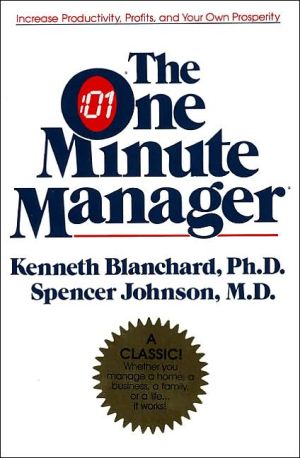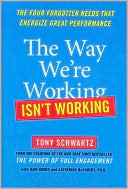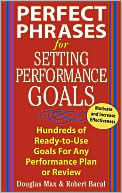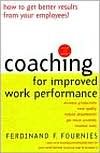Goal Setting: How to Create an Action Plan and Achieve Your Goals
Why is it that some people consistently seem to get more done than others? The answer is that they know how to set specific, achievable goals for themselves...and then follow through on them. This revised and updated edition of Goal Setting features worksheets, quizzes, and other practical tools, giving readers powerful techniques they can use to set a goal, make a plan, and acquire the resources and power necessary to achieve their objective. The book shows readers how to:\ act upon their...
Search in google:
In today’s hectic work environment, the chances are that you have way too much to do and too little time to get it done. No matter how accomplished and capable you are, achieving your goals can seem almost insurmountable. Why is it that some people consistently seem to get more done than others? The answer is that they know how to set specific, achievable goals for themselves . . . and then follow through on them. This revised and updated audio edition of Goal Setting offers listeners practical tools and powerful techniques on how to set a goal, make a plan, and achieve an objective. The audio book teaches you how to:act upon your objectives in a precise, targeted way • recognize obstacles and overcome them • become more assertive • change counterproductive behavior • establish priorities • make the most of your time Achieving goals takes hard work and discipline, but it can be done.
CHAPTER 1\ Getting Started\ Have you ever wondered why some people seem to have the ability to accomplish a lot? They know where they are headed and exude an enviable confidence. Effective goal setting is one of their keys to success. You may be working very hard at what you do, but without setting goals you'll find that your hard work doesn't yield meaningful results.\ Remember Alice in Wonderland? At one point in the story, Alice stops at the crossroads to ask the Cheshire Cat which road to take. He responds by asking where she wants to go. When she tells him that she "doesn't much care where," he replies, "then it doesn't matter which way you go." As a result, she wanders aimlessly in her travels.\ Like Alice, we often travel the road of life without a specific direction or goal. Few of us make goal setting a priority. In fact, studies have shown that most people either do not know what they want from life or, if they do, have no plans for realizing their dreams. Only a small percentage of people have specific, well-defined goals. And people who most frequently reach their goals are those who write them down and develop the plans to reach them.\ Take a moment to consider why writing down your goals makes such a significant difference in ultimate performance. Why do you think that writing down one's goals is so important?\ If your response included the idea that goal achievers record their goals so that they can read them, absorb them, and plan for them, then you are on the right track. People who achieve their goals take an active role in achieving them. They write them down, and then plan for their achievement. This chapter considers ten guidelines for evaluating and writing down your goals. If you follow these guidelines, you will establish your goals in a way that nearly guarantees your effort will be rewarded. Time and again, your reward is successful goal achievement.\ Before learning the ten guidelines for effective goal setting, take a few minutes to identify two of your goals—they can be anything as long as they are meaningful to you—and write them down. Then, complete the self-audit, which identifies ten elements for effective goal setting. Evaluate the extent to which you use these ideas when developing your goals.\ Your Goals\ 1. ___________________________________________________________\ 2. ___________________________________________________________\ Now complete the self-audit on page 5 by checking either "Nearly Always," "Sometimes," or "Rarely" for each statement.\ TEN GUIDELINES THAT REALLY WORK\ The questions you just answered identify ten guidelines for effective goal setting. Using these ideas ensures that you establish goals that can be accomplished. The ten guidelines are:\ 1. Effective goals are written. Many of us daydream about what we would like to accomplish. But how many of us pick up a pen and write down those things we most want to achieve? Once a dream is committed to paper, it becomes concrete. Your dream is given a sense of reality. Writing down your goals is a first step toward achieving them.\ SELF-AUDIT FOR GOAL SETTING\ Nearly Always Sometimes Rarely\ 1. When I set a goal, I write it down. _________ ________ ________\ 2. I describe my goal in specific, measurable terms. _________ ________ ________\ 3. I often visualize my goals. _________ ________ ________\ 4. My goals are achievable. _________ ________ ________\ 5. I set realistic deadlines for completing my goals. _________ ________ ________\ 6. I break a large goal into manageable units. _________ ________ ________\ 7. I look for the potential problems that may keep\ me from reaching my goals. _________ ________ ________\ 8. I take action to remove or minimize those potential\ problems. _________ ________ ________\ 9. I review progress toward my goals on a regular basis. _________ ________ ________\ 10. I know the personal rewards of reaching my goals. _________ ________ ________\ Assess your responses by counting the number of times you responded "Nearly Always" and multiply that number by 3. Multiply the number of times you responded "Sometimes" by 2, and the number of times you responded "Rarely" by 1. Then add the resulting three numbers for a total score.\ Nearly Always ______ (number of responses) x 3 = _______\ Sometimes ______ (number of responses) x 2 = _______\ Rarely ______ (number of responses) x 1 = _______\ GRAND TOTAL = _______\ Analyzing Your Score\ Score of:\ 24–30\ Excellent job of setting effective goals. If you find that you do an excellent job of setting goals, but you feel you could be more successful in reaching them, then Chapter 2 may be especially meaningful for you.\ 18–23\ You are on your way to achieving effective goal setting. Take another look at the statements where your responses were less than "Nearly Always." These are the areas for additional concentration.\ Below 18\ There are several areas in which you can improve your goal setting. In setting the goal of reading and using this book, you are becoming a more effective goal setter.\ 2. Effective goals are written in specific, measurable terms. If you write your goal in specific terms, then you probably have expressed it in a measurable way. A goal needs to be measurable so that your progress can be evaluated and so that you will know when you have achieved your goal. For instance, you may think about learning a new computer software package. But only when you describe your goal as "taking a class in WordPerfect between March and June and spending six to eight hours a week to learn its applications to my job" will you have a definable, measurable goal.\ EXAMPLES OF MEASURABLE GOALS\ • By April 1, I will have my taxes completed and ready to be mailed.\ • This week I will make fifteen sales calls and close on four of them.\ • We will hire a new secretary within two weeks.\ 3. Effective goals can be visualized. Picture yourself reaching your goal. Picture the result, the moment, and your feelings. Much of our energy for reaching goals comes from a desire to attain them. Usually, the more you desire something, the harder you will work toward achieving it. For example, a sales rep has won several awards. He accomplishes his extraordinary sales goals by visualizing his reward of receiving the plaque and winning the trip each year. He says, "I can see myself walking across the stage, being congratulated by the CEO, and enjoying my moment in the spotlight. When I'm having a slow day, I just visualize the result that I want, and it renews my energy."\ Victor Frankl is a Viennese psychologist and survivor of a World War II concentration camp. In his book Man's Search for Meaning, Frankl describes people who were able to visualize their goals for living and, consequently, were able to withstand the tortures of their circumstances. He maintains that people who had no purpose died quickly; those who kept an eye on their goals were more likely to survive.\ 4. Effective goals are achievable. Goals need to challenge your skills and abilities, without discouraging your effort and performance. For example, when initially implementing a quality management program, companies do not usually target the highly acclaimed and highly competitive Malcolm Baldrige National Quality Award as their first goal. Instead, they establish less stringent quality goals at first so that work teams can experience success in reaching those more realistic goals. As competency, success, and confidence grow, work teams may then decide to stretch for the higher goal.\ 5. Effective goals have realistic deadlines. Goals need a schedule. You are more likely to take action when you set a realistic time frame for accomplishing your goal. Schedule enough time to reach the goal, but not so much time that you lose interest in it. How many people have you heard say they need a vacation from their work but don't get around to taking one? A far higher percentage of people meet their goal when they record their specific intentions. "I will plan a vacation for the second week in March and arrangements will be settled by January 15."\ 6. Effective goals are manageable. Sometimes a goal can seem overwhelming because of its size. But if it is divided into smaller components, then it becomes easier to manage and is achievable. To hear your boss say that he wants you to open seventy-two accounts this year may sound unrealistic, but if you think of it in terms of six accounts each month, then the goal is more manageable.\ 7. Effective goals are analyzed for their potential problems. As you establish a goal, consider the steps you must take to accomplish it. Analyze the goal for potential problems that might keep you from reaching it. If a goal initially is considered in terms of what could go wrong, then you can take action to resolve or minimize problems before they occur. Critical thinking helps you cover all the angles and stay on the path toward achieving your goal.
Preface to the Second Edition vSetting Personal GoalsGetting Started 3Potential Obstacles to Reaching Your Goals 12Eleven Strategies to Optimize Reaching Your Goals 21Effective Goal Setting and People SkillsAssertive Behavior 33Changing People's Behavior 44Effective Goal Setting and Management SkillsSetting Priorities 57Planning 63Delegating 68Time Management 75Achieving Your GoalsGetting Help in Reaching Your Goals 85Getting the Power to Get Things Done 91Project Management for Goal Achievers 102Goal Achievement Worksheet 113Index 115
\ From the Publisher“The slim but power-packed book teaches the reader how to better manage time in a fast paced, get-it-done now world.”\ Houston Business Journal\ “Goal Setting promises to help us get off our duffs by showing us how to understand our goals… and should help us achieve our dreams…"\ Accounting Today\ “…very well written and is applicable to anyone at any time in his or her life…and gets you to think for yourself. I highly recommend it.”\ -- AORN magazine\ “…quick read that provides a process and methodology for developing and achieving goals.” –TheStreet.com (10 Business Books to Get You on Track Again)\ \ \








